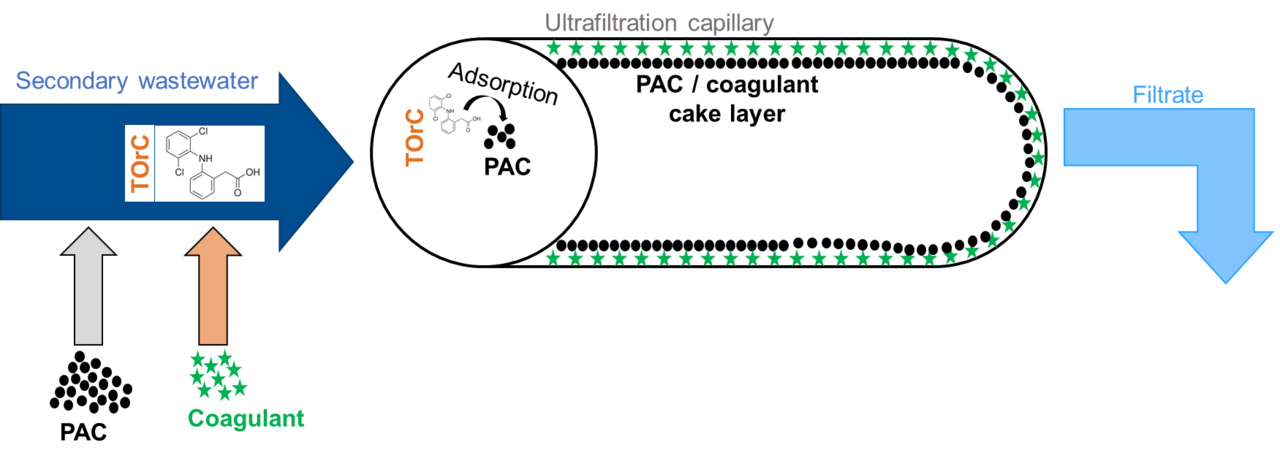Inline dosing of powdered activated carbon and coagulant prior to ultrafiltration
The removal of pathogens as well as trace organic chemicals (TOrCs) is important where water reuse with high water quality requirements is practiced. Hybrid membrane processes such as inline dosing of powdered activated carbon (PAC) prior to ultrafiltration membranes (UF) have already shown promising potential for the abatement of these constituents.
However, questions regarding the optimization of the operational stability by the employment of coagulation and its interferences with inline dosed PAC, have not yet been comprehensively investigated.
Within the scope of this pilot-scale study, inline dosing of PAC was combined with or without the addition of coagulant prior to UF. By the application of PAC inline dosing significant TOrC removal could be achieved. Coagulation clearly reduced the build-up of transmembrane pressure. The operational mode of precoating the UF with coagulant combined with continuous inline dosing of PAC exhibited particularly good TOrC removal results along with optimized membrane fouling mitigation. In contrast, the simultaneous and continuous dosing of PAC and coagulant is not recommended, in particular owing to detrimental effects of the coagulant on TOrC removal efficiency by PAC.
| Project leader | Prof. Dr.-Ing. Jörg E. Drewes Dr.-Ing. Uwe Hübner |
| Researcher | Sema Karakurt, M. Sc. Veronika Zhiteneva, M. Sc. |
| Funding | Bundesministerium für Forschung und Bildung (BMBF) |
